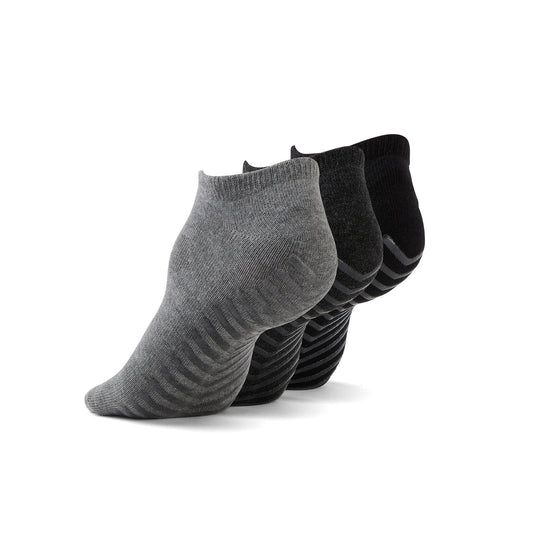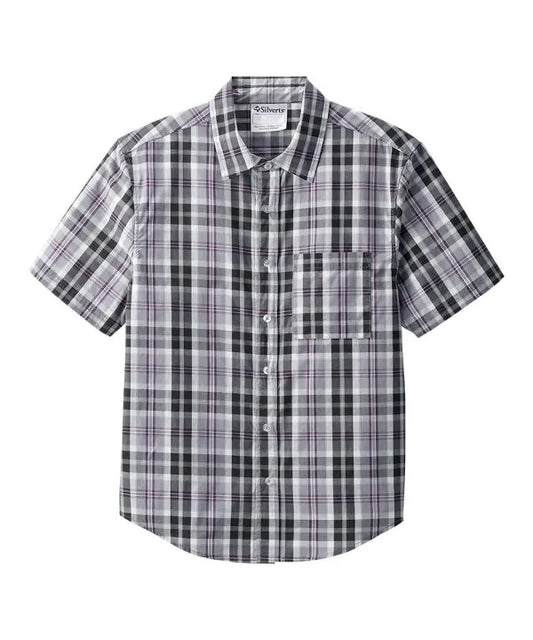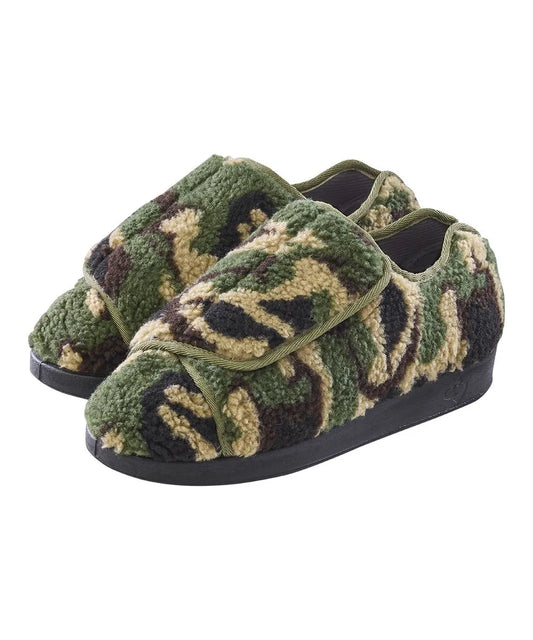Written by Liana Wang
Edited by Danishy Kuganesan
What Are Invisible Disabilities, and Why Are They Often Misunderstood?
When people hear the word "disability," they often picture someone in a wheelchair or using a cane. But not all disabilities are visible. Invisible disabilities include conditions like chronic pain, mental health disorders, autoimmune diseases, and neurological conditions. Since these disabilities don’t have obvious physical signs, people often misunderstand them or even assume they don’t exist at all.
One major reason invisible disabilities are misunderstood is that they challenge our expectations of what disability "looks like." If someone appears healthy, they might not get the empathy or support they need. This can lead to frustration and isolation for those living with these conditions.
How Can I Support Someone with an Invisible Disability?
Supporting someone with an invisible disability starts with listening and believing them. It might not always be obvious when someone is struggling, so taking their words seriously is crucial. Avoid saying things like, "But you don’t look sick!" or "Have you tried yoga?" because these comments can feel dismissive. Instead, ask how you can help. Some people may need accommodations like flexible schedules, while others might appreciate emotional support. Even small gestures like offering a seat, understanding when they cancel plans, or checking in can make a big difference.
Caring for and Acknowledging Someone with an Invisible Disability
Invisible disabilities, such as chronic pain, mental health conditions, or neurological disorders, are not immediately visible to others but can significantly affect a person’s daily life. When caring for someone with an invisible disability, it's important to:
-
Listen Actively: Be attentive and listen to their needs without assuming or dismissing their experiences. Acknowledge their struggles even if they are not physically apparent.
-
Offer Support without Pressure: Respect their boundaries. Sometimes, the best support is offering assistance when asked, without forcing help or advice.
-
Educate Yourself: Take the time to learn about the specific condition they live with. This demonstrates empathy and ensures you're informed about their challenges.
-
Foster an Inclusive Environment: Create spaces that accommodate various needs, such as flexible schedules or accessible environments, to help them feel safe and supported.
-
Respect Privacy: Understand that not everyone may wish to share details about their disability. Always prioritize their comfort and privacy.
Acknowledging someone’s invisible disability involves both verbal recognition and adjusting actions to be inclusive and understanding. Respect and patience are key.
Recovery Pants with Side Snaps for Post-Surgery
What Challenges Do People With Invisible Disabilities Face in Daily Life?
People with invisible disabilities face constant hurdles, from skepticism to accessibility barriers. Everyday tasks like grocery shopping, commuting, or working a full shift can be exhausting or painful. Yet, because their struggles aren’t obvious, they often face judgment or assumptions that they are lazy or unreliable.
Another major challenge is navigating social expectations. Many people with invisible disabilities push themselves to "act normal" because they fear being dismissed or treated differently. This can lead to burnout, increased symptoms, and mental health struggles.
Why Do People With Invisible Disabilities Struggle to Get Recognition and Accommodations?
One big reason is that many disability policies and accommodations are designed with visible disabilities in mind. People with invisible disabilities often have to "prove" their condition, which can be a frustrating and exhausting process. They might need doctor’s notes, extensive paperwork, or repeated explanations just to get the support they need. There’s also a cultural stigma. Many societies value productivity and physical ability, making it hard for people with invisible disabilities to ask for accommodations without feeling guilty or judged. Because of this, many people push through their symptoms instead of requesting the help they deserve.
How Can Workplaces Become More Inclusive for Those With Invisible Disabilities?
Workplaces can take several steps to be more inclusive. First, fostering an open and supportive environment is key. Employees should feel safe disclosing their needs without fear of judgment or job loss. Flexible work arrangements, such as remote work or adjusted schedules, can be life-changing for people with invisible disabilities. Additionally, training managers to understand and recognize invisible disabilities can help create a more supportive culture. Lastly, offering wellness programs, mental health days, and accessibility options beyond just physical accommodations can make a huge difference.
Women's Dual Zipper Extra Wide Winter Boots
What Role Does Mental Health Play in Living With an Invisible Disability?
Mental health and invisible disabilities are closely linked. Many invisible disabilities, such as chronic illnesses and neurological conditions, can lead to anxiety and depression due to constant pain, fatigue, or societal pressures. Additionally, many mental health disorders like anxiety, PTSD, and bipolar disorder, are considered invisible disabilities. Because these conditions aren’t outwardly visible, people living with them often experience stigma and disbelief, which can worsen their struggles. Therapy, peer support groups, and self-care strategies can help, but society also needs to do its part by reducing stigma and recognizing mental health as a legitimate aspect of disability.
How Can We Educate Others About the Realities of Invisible Disabilities?
Education starts with conversation. Sharing personal stories, advocating for awareness campaigns, and using social media to spread information can help break down misconceptions.
It’s also important to challenge ableist attitudes when you hear them. If someone makes a dismissive comment, correcting them in a kind but firm way can create a ripple effect. Schools, workplaces, and community groups can also implement training programs to educate people on the wide range of disabilities that exist beyond the visible.
What Are Common Misconceptions About Conditions That Aren’t Immediately Visible?
One of the biggest misconceptions is that people with invisible disabilities are "faking it." Just because someone has a good day doesn’t mean they’re cured, and just because they can do something one day doesn’t mean they can do it every day.
Another common myth is that people with invisible disabilities don’t need accommodations if they can function independently. Many people learn to mask their symptoms, but that doesn’t mean they aren’t struggling. Disability isn’t just about what you see, it’s about the daily impact a condition has on someone’s life.
Unisex Ultra-Soft Anti-Slip Crew Socks - 4 pack
How Can Someone With an Invisible Disability Advocate for Themselves?
Advocating for yourself when you have an invisible disability can be tough, but it’s essential. Knowing your rights, whether in the workplace, at school, or in public spaces, can give you the confidence to ask for what you need. It’s also helpful to practice setting boundaries. If you need to say no to plans or request flexibility at work, that’s okay. Surrounding yourself with supportive people, whether friends, online communities, or advocacy groups, can also make self-advocacy easier.
A Personal Story: Living with an Invisible Disability
Emma had always been an energetic person, the kind of friend who planned road trips and worked extra hours to meet deadlines. But after being diagnosed with an autoimmune disease, everything changed. The fatigue was relentless, her joints ached constantly, and even simple tasks like making breakfast felt overwhelming some days. Yet, when she explained her condition to others, she was often met with skepticism. "You don’t look sick," people would say, as if that meant her struggles weren’t real.
At work, Emma hesitated to ask for accommodations. She didn’t want to seem weak or incapable. But after months of pushing through the pain, she realized that advocating for herself wasn’t a sign of failure but necessary for her well-being. With the help of her doctor, she worked out a modified schedule and learned to communicate her needs more confidently. Though the challenges didn’t disappear, knowing she had a support system made all the difference.
Adaptive Clothing for Invisible Disabilities
Adaptive clothing is designed to provide comfort, ease, and independence for those with invisible disabilities. Items like the Recovery Pants with Side Snaps for Post-Surgery (here), which are ideal for those undergoing medical procedures, offer easy dressing while ensuring comfort. For added versatility, Women's Dual Zipper Extra Wide Winter Boots (here) are tailored for those with swelling or mobility challenges, providing easy access and a wide fit. These garments help individuals maintain dignity and independence while managing their unique needs.
For more information, visit June Adaptive.
What Resources Are Available for Individuals and Families Affected by Invisible Disabilities?
Thankfully, there are many resources available. Organizations like the Invisible Disabilities Association, National Alliance on Mental Illness (NAMI), and chronic illness support groups provide education, advocacy, and community support.
For workplace accommodations, resources like the Job Accommodation Network (JAN) can help individuals and employers understand their rights and options. Therapy, online communities, and even social media groups can also be great sources of support.
Finally…
Invisible disabilities are just as valid as physical ones, and the challenges they bring should not be overlooked. It’s vital to recognize that these conditions, though not always outwardly visible, significantly impact people's lives in ways that are just as valid as physical disabilities. By actively educating ourselves, challenging preconceived notions, and advocating for more inclusive practices, we can contribute to a world that is both more understanding and supportive. Whether you live with an invisible disability or are an ally, extending compassion, patience, and open-mindedness helps create a more inclusive and accessible society for everyone. Together, we can ensure that no one feels overlooked or marginalized, and that each person’s needs and experiences are acknowledged. To learn more about adaptive wear, check out the JuneAdaptive website: https://www.juneadaptive.com/


















